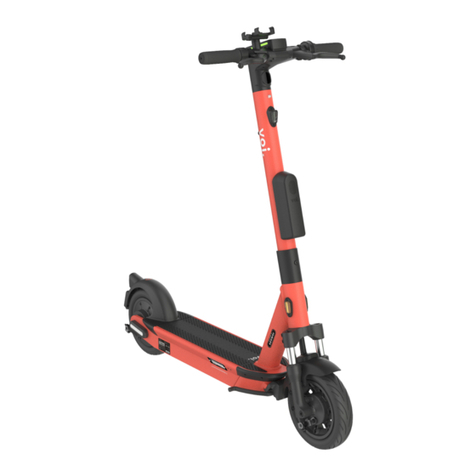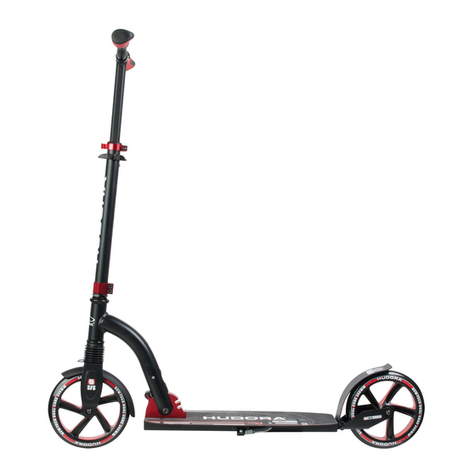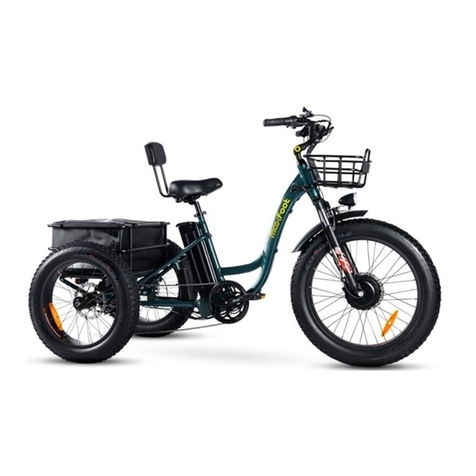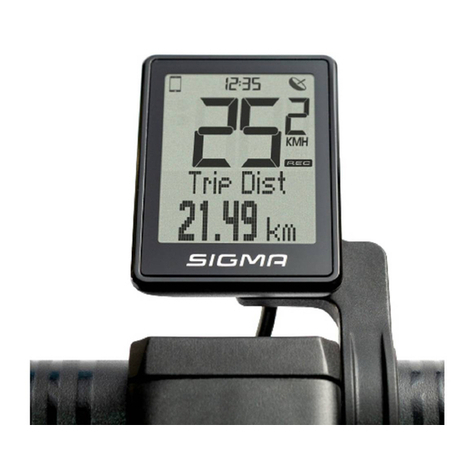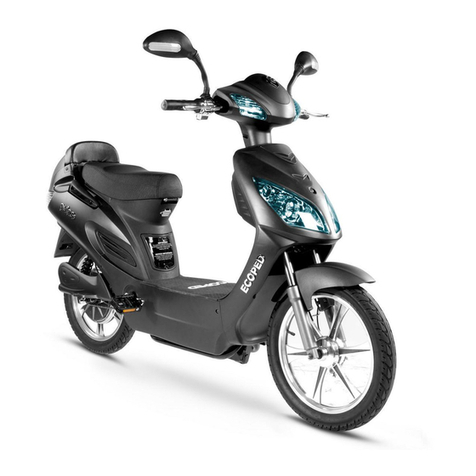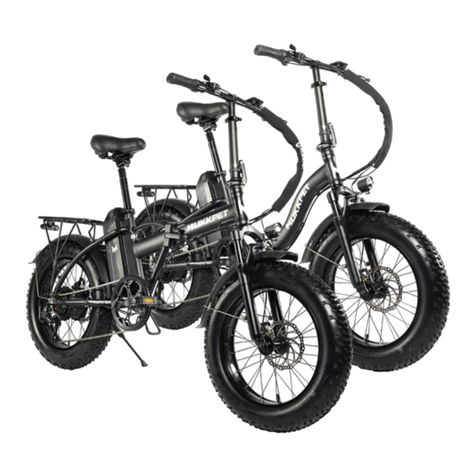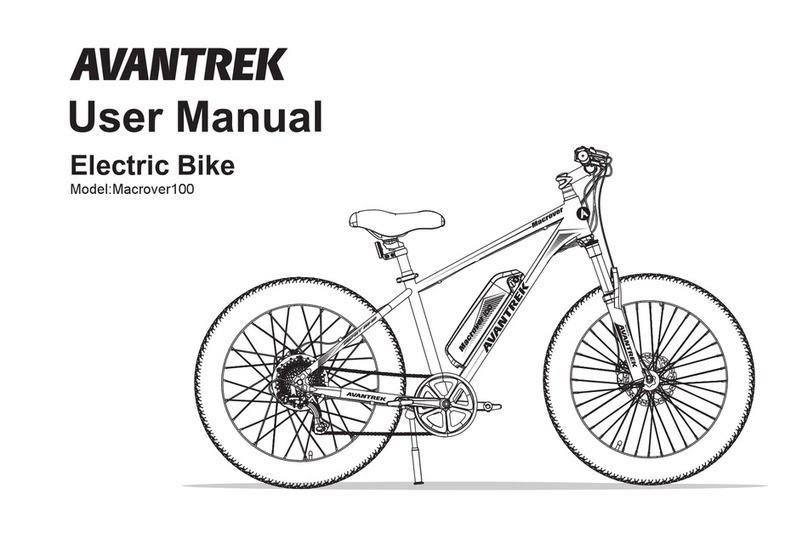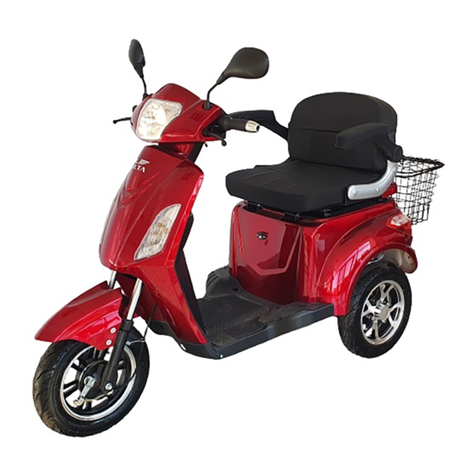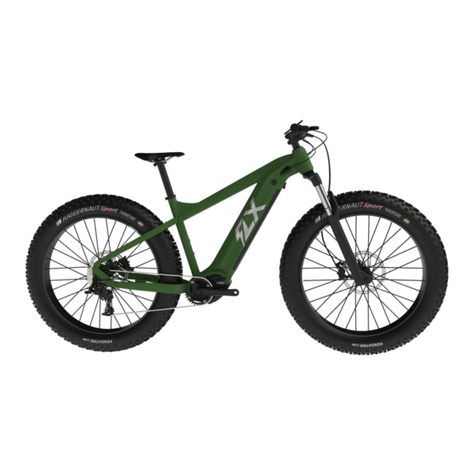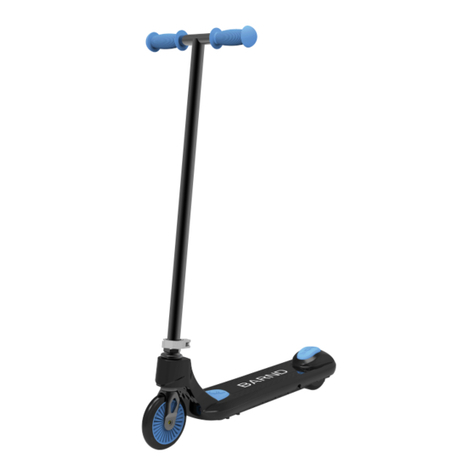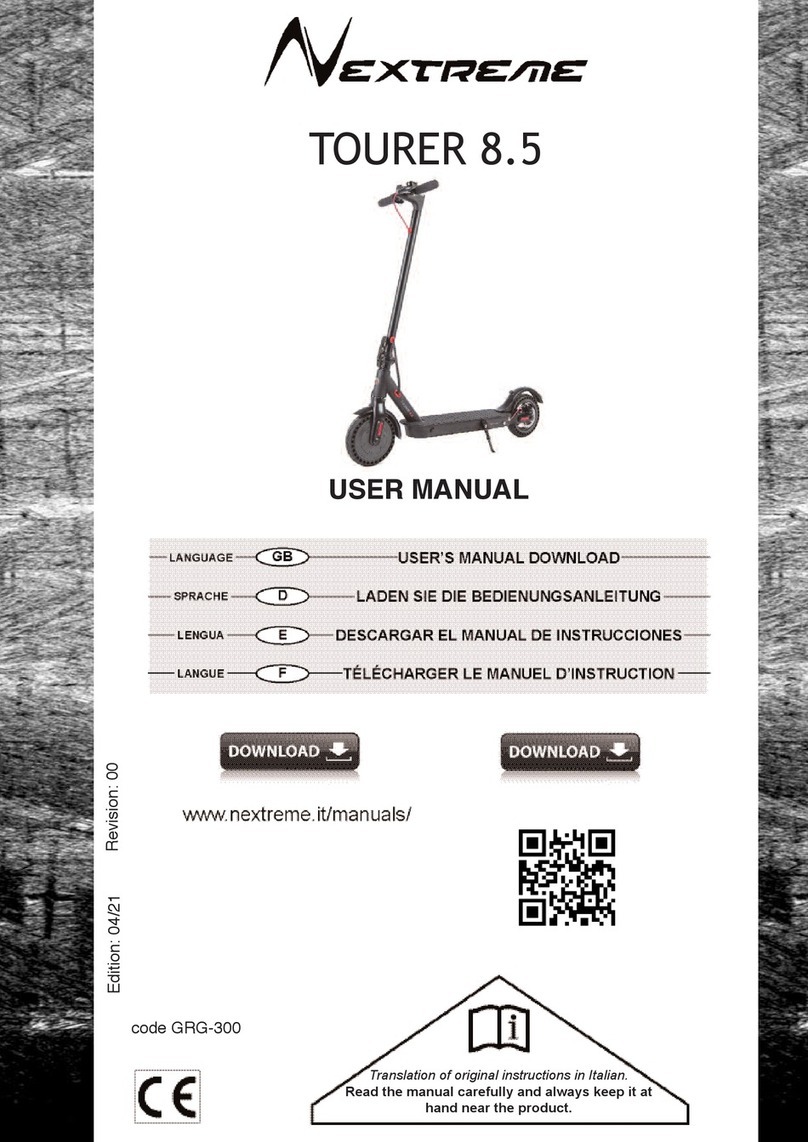VOI SNSC 2.3 User manual

User Manual
SNSC 2.3

The product can be used from the age of 18 and by people with limited physical, sensory or
mental abilities. In addition, persons without prior experience or knowledge may use the
product, provided they have been informed in advance of the safe use and dangers. Children
should not play with this product. Maintenance and cleaning should not be performed by
unsupervised children.
Content
1. Product manual
2. Product and parts
3. Product specification
4. Product drawing
5. Battery and charging instructions
6. Battery instructions
7. Driving safety
8. Certification
9. Maintenance
1. Product manual
This is a portable small electric vehicle that is ideal for covering short distances on public
roads. The product has a modern, sporty design and is robust.
2. Product and parts
●Scooter
●Battery charger
●Instruction manual
1

3. Product specification
●Range: 60km
●Load capacity: 100kg
●Gradient: 14%.
●Total weight: 28kg
●Max. Speed: 20km/h
●Colour: orange/black
●Size: 1190*517*1219mm
●Brakes: drum brakes front and rear
●Charging time: 3-4h (5A charger), 4-5h (4A), 5-6h (3A) and 6-7h (2A)
●Charging temperature: -10-40°C
●Usage temperature: -10-40°C
●Storage temperature: -20-45°C
4. Product drawing
2

5. Battery and charging instructions
Warning: Do not connect the charger to the scooter if charging cables or the charging
connection are moist.
The scooter is fully charged when the LED light on the charger changes from red (charging)
to green (charged). If the scooter is not charging, keep the protection of the charging port on
the scooter closed.
1. The safety cover for the charging port should be replaced after the scooter has been
charged.
2. The scooter should be kept out of the reach of children during charging.
3. Under no circumstances should a charger other than the one supplied be used to
charge the scooter. In addition, the supplied charger should only be used for this
scooter.
4. Never disassemble a charger that is not working. Please contact the manufacturer.
5. The scooter should be charged in a dry, well ventilated place.
6. If you notice an odor or very high temperature during charging, stop charging
immediately and contact the manufacturer.
6. Battery instructions
1. The battery should not be stored near fire or corrosive environments as it is highly
flammable.
2. The label on the battery should not be obscured or removed.
3. The battery compartment should not be opened to avoid damaging parts inside the
battery. If the battery does not charge, please contact the manufacturer.
4. To keep the battery in a healthy condition, it should be charged at regular intervals,
every 20-30 days.
3

5. Please only carry out battery swaps as depicted
7. Driving safety
1. The scooter is a motor vehicle. Driving experience is necessary to be able to drive
safely. Voi is not responsible for any injury or damage caused by incorrect driving
behaviour or by not following the instructions in this document.
2. If all instructions and warnings in this manual are followed, the risk of injury can be
significantly reduced but not completely eliminated. There is always a risk of loss of
control, accidents and falls when using the scooter. When using the scooter on
public roads the local laws and regulations (StVO) must always be observed. Similar
to other vehicles, higher speed leads to longer braking distances. Strong braking on
slippery surfaces can lead to falls. Please ride carefully at all times and always keep
a safe distance from other vehicles and participants in traffic.
3. Please always wear an approved and suitable bicycle or skateboard helmet that
protects your head in case of a fall.
4

4. The first ride on the scooter should be made away from children, pedestrians, pets,
vehicles and other obstacles and potential hazards.
5. Please always give pedestrians the right of way. If you are approaching a pedestrian
from behind, make sure that you have sufficient visibility and reduce speed to
walking speed. Please always comply with applicable rules and laws.
6. The safety instructions in this document serve as a guide when you are on private
property and the rules of the road traffic regulations do not apply. Voi is not
responsible for any damages, injuries, accidents or legal proceedings that may arise
from a violation of these safety instructions.
7. The scooter should only be driven by persons who have read this manual. If you
allow other people to ride the scooter you have borrowed, their safety is your
responsibility. Help first time users until they are familiar with riding the scooter and
ensure that they wear a helmet and, if necessary, additional pads.
8. Before each journey, please ensure that the scooter and its components are in
perfect condition. If the scooter makes unusual noises or an alarm is triggered, stop
immediately and contact the manufacturer.
9. Always be alert when operating the scooter. Drive with foresight to anticipate
potential hazards, obstacles and changing road conditions.
10. To reduce the risk of injury, please read all warnings in this document carefully. Drive
slowly and never drive on roads where cars are present. The manufacturer
recommends a minimum age of 18 years. Always observe the following safety
instructions:
a. People who should not ride a scooter:
i. Persons under the influence of alcohol or drugs
ii. Persons who should avoid strenuous physical activity due to illness
iii. Persons who have balance problems or are unable to keep their
balance
iv. Persons whose weight exceeds the maximum load
v. Pregnant women
b. Applicable laws and rules of road traffic should always be observed. The
scooter may only be used where the law permits.
c. To ensure safe driving, it is essential that you drive with foresight and are
sufficiently visible to other road users.
5

d. You should not ride in snow or rain, or on wet, muddy, icy or otherwise
slippery roads. Do not drive over obstacles (sand, gravel, etc.). This can lead to
loss of control and thus to a fall.
11. Do not charge the scooter when the charger or power outlet is wet.
12. As with other electronic devices, use a surge protector when charging the scooter.
This will protect the scooter and prevent damage due to overvoltage. Only use the
charger supplied by Voi. Never use chargers from other products.
13. Only use parts and accessories approved by Voi. Do not modify the scooter.
Modifications to the scooter may have a negative effect and increase the risk of
injury and damage. It will also invalidate the product warranty.
8. Certification
The battery meets the requirements of UN/DOT 38.3.
EU Conformity
Hereby Voi Technology AB declares that the radio equipment type SNSC 2.3 is in
compliance with Directive 2014/53/EU. The full text of the EU Declaration of Conformity is
available at the following Internet address: www.voiscooters.com.
The EU Declaration of Conformity can also be found in the annex to this document.
Compliance Statement of the European Union - Battery Recycling Information for
European Union
Batteries or battery packaging must be marked in accordance with EU Directive
2006/66/EC on batteries, accumulators and waste batteries and accumulators. The
directive sets the framework for the disposal and recycling of batteries and accumulators in
the EU. The marking is applied to all batteries, with an indication that the battery may not be
disposed of conventionally but will be recycled at the end of its life.
6

In accordance with EU Directive 2006/66/EC, batteries and accumulators are
to ensure that they are disposed of and recycled separately. The marking on a battery
should also show the chemical symbol for the metals contained in the battery (Pb for lead,
Hg for mercury and CD for cadmium). Users should never dispose of batteries and
accumulators in the normal way. Instead, they should go to the designated collection points
for the return, recycling and processing of spent batteries and accumulators. It is important
that customers and users are willing to help reduce any negative effects of batteries and
accumulators on the environment and health.
Technical details on radio transmission
7
Band
Service
Frequency Range
Power Class
Maximal Output
Band 1
BLE
2402 - 2480MHz
Power Class 2
1.28 dBm
Band 2
GSM 900 MHz
880 - 915MHz
Power Class 6
35 dBm
Band 3
GSM 1800 MHz
1710 - 1785MHz
Power Class 31
32 dBm
Band 4
WCDMA B1
1920 - 1980MHz
Power Class 3
25 dBm
Band 5
WCDMA B8
880 - 915MHz
Power Class 3
25 dBm
Band 6
LTE-FDD B1
1920 - 1980MHz
Power Class 3
25.7 dBm
Band 7
LTE-FDD B3
1710 - 1785MHz
Power Class 3
25.7 dBm
Band 8
LTE-FDD B7
2500 - 2570MHz
Power Class 3
25.7 dBm
Band 9
LTE-FDD B8
880 - 915MHz
Power Class 3
25.7 dBm
Band 10
LTE-FDD B20
832 - 962MHz
Power Class 3
25.7 dBm
Band 11
GPS receiver
-
n/a

9. Maintenance
Cleaning and storage
Please use a soft, damp cloth to clean the frame of the scooter. For difficult to remove dirt,
you can pre-treat with a toothbrush and toothpaste and then clean with a soft, damp cloth.
Scratches on the plastic parts can be polished with fine sandpaper.
Note: Do not clean the scooter with alcoholic substances, vinegar, petrol or other corrosive
substances. These can corrode the surface of the scooter and destroy it. Do not clean the
scooter with a pressure washer.
Warning: Please ensure that the scooter is switched off, the charger cable is not plugged in
and the rubber protector is fitted to the charger connector before cleaning the scooter,
otherwise you may damage the electronic components. Store the scooter in a cool, dry
place. Do not leave the scooter outside for long periods of time. If the scooter is exposed to
sunlight and extreme temperatures (hot or cold) for long periods of time, traces of wear and
tear on the plastic will become visible more quickly and the battery life will be reduced.
Battery Maintenance
Do not store or charge the battery at temperatures outside the specified limit (see
specifications). Do not puncture the battery. Please comply with local laws and regulations
regarding battery disposal. Good maintenance of the battery will significantly extend its life.
The battery should be charged after each use and it should be avoided that the battery is
completely discharged. Battery performance is best at room temperature (22 degrees
Celsius). At temperatures below freezing point, battery performance drops significantly. At
temperatures of -20 degrees Celsius, battery performance is halved.
Note: Typically, a fully charged battery in standby mode should last for 120-180 days, a low
charged battery for 30-60 days. Please remember to charge the battery after each use. If
the battery is completely discharged, it may damage the battery.
Warning: Do not attempt to disassemble the battery. Fire and
Explosion hazard.
Warning: Do not drive if the ambient temperature is outside the specified temperature limits
of the device. Very high or low temperatures will affect the scooter's performance, which
may result in injury or damage.
8

Voi Technology AB
Warfvinges Väg 34
112 51 Stockholm
Sweden
9


Table of contents
Other VOI Scooter manuals
